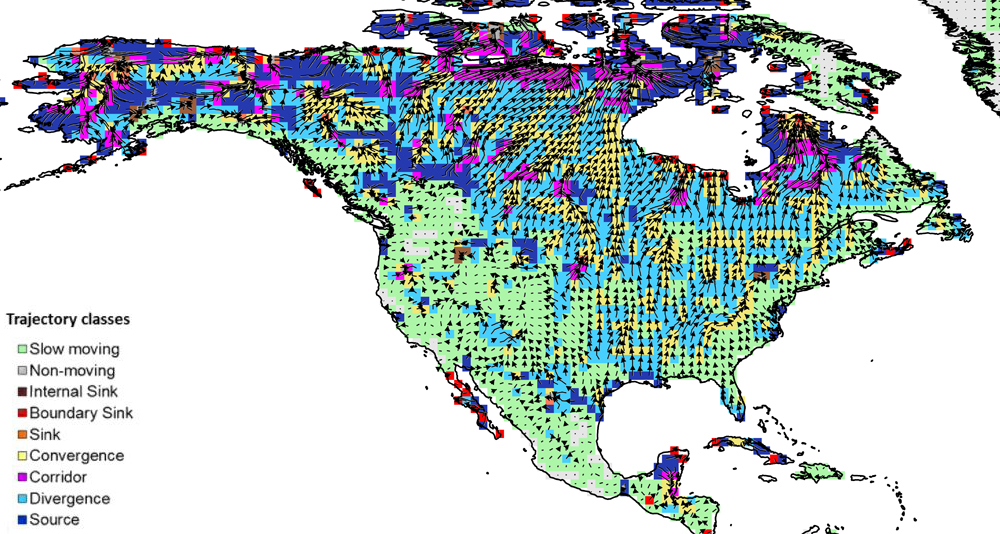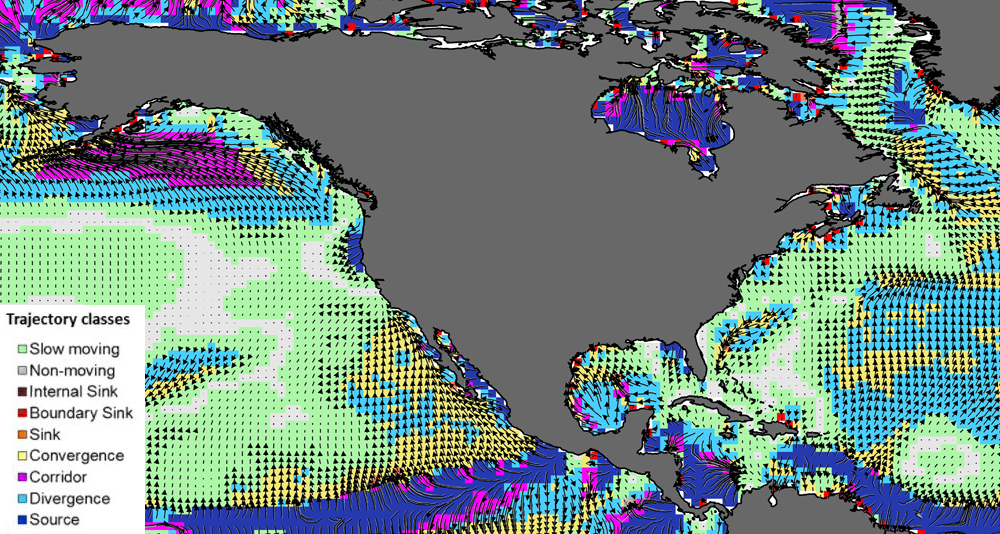Maps: Habitat Shifts due to Climate Change
North America

The habitat ranges of many plant and animal species will likely change with climate change, as temperatures shift and force organisms to migrate toward their preferred temperature ranges. Where, exactly, habitats will shift remains unclear, and is complicated by the fact that temperatures change at different rates around the world. Now, researchers have created maps showing predictions of the direction in which habitats will migrate based on the speed at which temperatures change in different regions. The length of the arrows in the maps indicates the velocity of temperature change, and the color schemes correspond to the nature of the region, as follows:
SINK = Migrations terminate due to some barrier, such as a mountain.
SOURCE= Migrations do not terminate.
CORRIDORS = Many migrations passing through.
DIVERGENCE = Fewer migrations end than start.
CONVERGENCE = More migrations start than end.
North Atlantic Ocean

SINK = Migrations terminate due to some barrier, such as a mountain.
Get the world’s most fascinating discoveries delivered straight to your inbox.
SOURCE= Migrations do not terminate.
CORRIDORS = Many migrations passing through.
DIVERGENCE = Fewer migrations end than start.
CONVERGENCE = More migrations start than end.
North Atlantic Ocean, polar region

SINK = Migrations terminate due to some barrier, such as a mountain.
SOURCE= Migrations do not terminate.
CORRIDORS = Many migrations passing through.
DIVERGENCE = Fewer migrations end than start.
CONVERGENCE = More migrations start than end.
Mediterranean Sea

SINK = Migrations terminate due to some barrier, such as a mountain.
SOURCE= Migrations do not terminate.
CORRIDORS = Many migrations passing through.
DIVERGENCE = Fewer migrations end than start.
CONVERGENCE = More migrations start than end.
Australia

SINK = Migrations terminate due to some barrier, such as a mountain.
SOURCE= Migrations do not terminate.
CORRIDORS = Many migrations passing through.
DIVERGENCE = Fewer migrations end than start.
CONVERGENCE = More migrations start than end.

